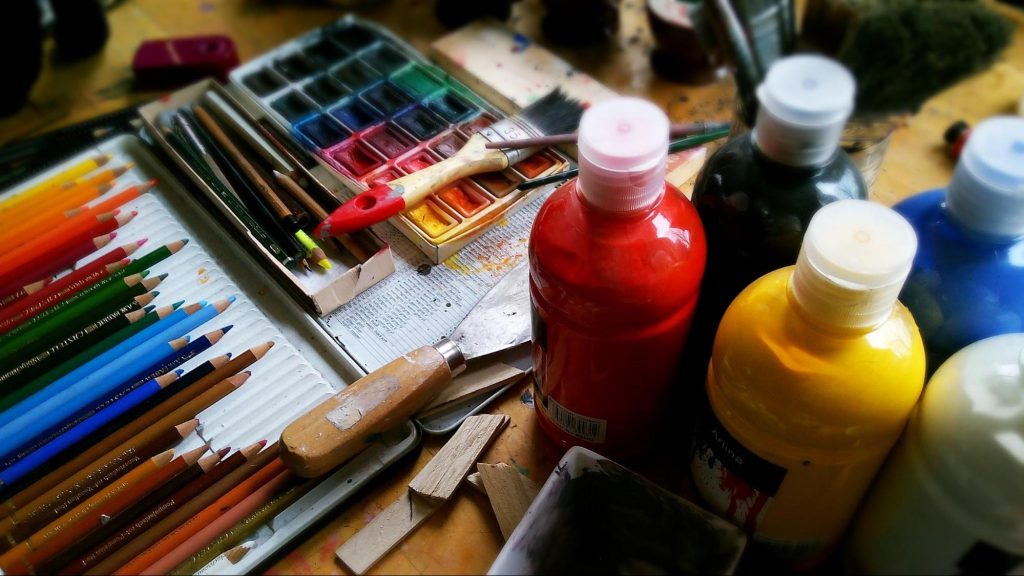6 Effective SEO Tips To Promote Your Art Business
Being an artist might be a gift of God, but your art business is a blend of your talent, hard work, and passion. Art creation is a process that requires your heart and a load of effort. Sometimes it takes days just to make a single piece of art. With the internet and social media, it has become much easier to reach thousands of art-enthusiasts in a short time. However, the process isn’t as straightforward as it seems.
Quick Links
To promote your art business, you need to optimize your digital content for search engines. In this digital era, SEO (Search Engine Optimization) is one of the most useful tools to expand your reach. It helps you increase your sale and allows you to build a loyal customer base. SEO enables you to optimize your content so that search engine algorithms can quickly identify and promote your content on its pages.
Why is SEO Crucial for Your Business?
The internet is a world of enormous amounts of information. Google processes thousands of results in a second when someone hits the search button. You wouldn’t want your artwork to get lost in this pool of content. That is why you need to learn SEO tactics to promote your work.
You can improve your internet rankings by implying proper SEO tactics. Not just that, but with proper SEO, your artwork can appear on top of the search results, which increases the traffic on your content. Here are five useful SEO tips for your art business.
1. Build Your Brand

The brand image of artists is a reflection of their art. To establish your strong digital presence, you must start aligning your vision with your work by considering your goals, personality, and values. You need to start working on building your digital persona, for which you first need to decide how you want to be recognized by your audience.
Whether acrylic art or an oil painting, every artwork needs good marketing to reach the target audience. Decide what you want to promote in the first place,
- You, as an artist
- Your artwork
- Both
Making this decision will be the foundation of your SEO strategy. You should use the aesthetics of your artwork to design your webpages. For example, if your artwork consists of a dark element, you should leverage it to build your brand image around it. Once you have worked on your brand image, you can generate targeted keywords for your audience.
2. Leverage Keywords

Whatever people enter on google as a search term becomes a keyword. They are the foundation of SEO, and you will need them in different stages of marketing your artwork. You can start building your keywords based on your market analysis or utilizing tools like Google Trends. These keywords searching websites provide you the detailed information on trending keywords. You can compare two keywords and analyze their search volume to make an informed decision about using them.
Once you have a list of keywords to target, you can start embedding them in your content like posts, webpages, etc. You can use generic keywords, but using more specific keywords helps you to target a particular audience. The competition for top keywords is high, so using them might reduce your chances of ranking on search pages.
For example, you can use specific keywords like pastel paintings in the NYC area.
Making location-specific keywords is a good SEO practice that allows you to target your local audience. You can use the same keywords as image labels, title tags, etc., to rank on the search pages.
3. Write a Blog
People do read, especially the ones who are interested in arts. Many art-lovers admire the process of making an art piece. They love to read about the inspirations and ideas an artist put behind any painting. As an artist, you need to satisfy this craving by writing a blog about your artwork. You can use the keywords in your blogs so that Google can easily associate your work with your writing.
Just because you are promoting your artwork does not mean you should only write about it. You can write about your interests in different fields like cinema, sports, and even politics. This will help the audience to connect with you better.

4. Use Hashtags on Social Media
You can implement SEO practices on your social media accounts by using different and relevant hashtags on your photos. People can easily find your artwork when you use these hashtags. They also boost your ranking in image search results. Using appropriate tags and meta tags on your website content is a fantastic way to strengthen your search engine position.
5. Maintain the Flow of Content
Consistency is a crucial part of a good SEO strategy. Though the internet works at a superfast speed, this doesn’t apply to SEO. Search engines take time to identify you as a credible and authoritative source. Thus, you must keep on creating good quality content and be consistent.
6. Improve Your Website With Holistic SEO
Most people think of SEO as a series of technical tricks that help your website rank higher in search engine results pages. However, Holistic SEO takes a broader approach, considering all aspects of your website that could impact its visibility and performance.
This includes everything from the design and layout of your site to the quality of your content. On-page optimization includes creating effective titles, meta descriptions, and XML sitemaps. Off-page optimization involves linking to your website from high-value domains and writing great guest posts for influential sites. By optimizing these aspects of your website, you’ll boost traffic and help improve your website’s ranking in the search engine results pages.
By taking a holistic approach to SEO, you can make sure that your site is optimized for both search engines and users. As a result, you’ll see improved traffic and conversions. So if you’re looking to take your website to the next level, consider holistic SEO. It’s an effective, holistic approach that will help you improve your visibility and performance in search engine results pages.
Final Words,
SEO is essential when you promote something in the digital world. This holds to the art business. Like many businesses, art business takes time to establish its consumer base. Indeed once you acquire your position in the market, finding an audience becomes effortless. SEO can be a fantastic resource in your quest to promote your art business.
What Is WooCommerce Product Slider and Why Your Store Needs It
Why Do Product Images Matter So Much in Online Stores? When someone visits an online store the…
0 Comments9 Minutes
How to Streamline Your Customers’ Shopping Experience?
The goal for any online store is to make shopping as smooth as possible. When visitors move…
0 Comments8 Minutes
Strengthening Brand-Customer Relationships Through Gamified Loyalty Programs
Creating lasting connections with customers has become increasingly vital as the marketplace grows…
0 Comments6 Minutes
How to Use SEO and SEA Together in Search Engine Marketing
In digital marketing, search engine marketing (SEM) plays a critical role in improving online…
0 Comments10 Minutes
Content Marketing Growth Hacks: Real Shortcuts to Drive Traffic
Are you still lagging in content marketing? Sticking to these old strategies seems…
0 Comments10 Minutes
How to Build a Strong Local Following Using Social Media Marketing
In the days of likes, shares, and stories, local businesses have a golden opportunity to create…
0 Comments9 Minutes
Why WooCommerce is the Best Choice for Your Online Store?
WooCommerce stands out as a top option for anyone looking to build an online store. This platform…
0 Comments8 Minutes
How to Use AI-Powered SEO Tools for WordPress eCommerce
SEO is a critical factor in the success of any e-commerce WordPress store. As competition…
0 Comments11 Minutes








